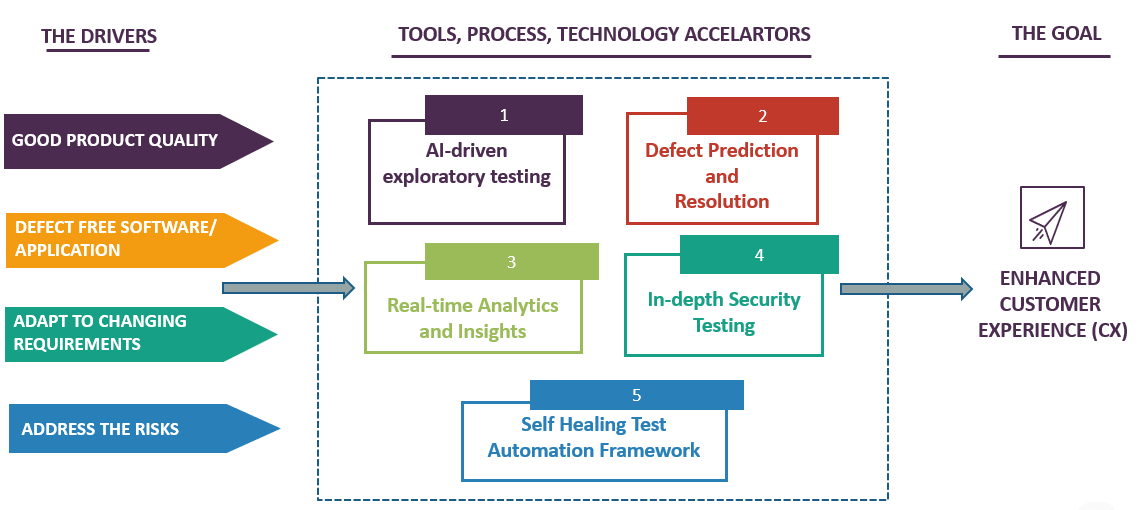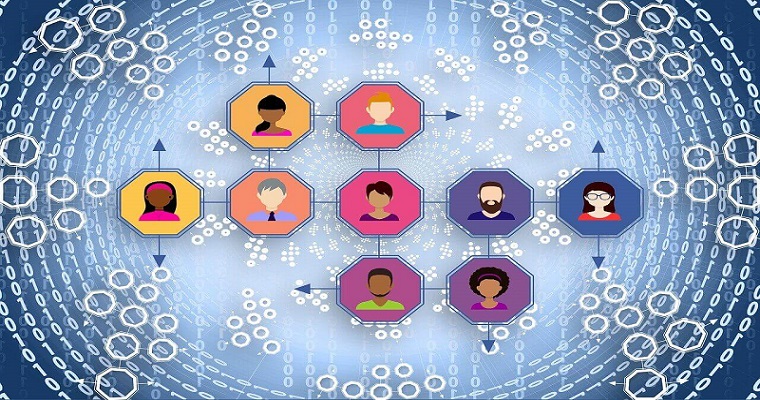Accelerate Success with AI-Powered Test Automation – Smarter, Faster, Flawless
Start free trialIntroduction
“Customer Experience is the new battlefield” – Chris Pemberton, Gartner
Product development involves careful planning, innovation, automation, time, and resources. One really vital piece of the development process is product testing for quality, reliability, and security. However, gone are the days when merely testing software against the business and technical requirements sufficed. Your application or software may work as defined, but Are your customers happy and satisfied? Does your product meet the user’s needs?
One thing that today’s customers won’t appreciate is bad Customer experience (CX). Customer satisfaction can make or break your business. Instant gratification is what today’s customers look for. Thus, CX is the biggest factor driving customer loyalty. Most companies including the FAANG have already made great strides into developing next-gen apps and are integrating AI across their tech stack for delivering higher customer experience.
Delight the customer and beat the competitor – is what all organizations are focused on. And this is not just online retail, it’s across every industry like finance, healthcare, media.
So, How do You Measure Customer Experience?
Gartner in its recent study emphasizes the importance of the 5 types of metrics such as customer satisfaction (CSAT), customer loyalty/retention/churn, advocacy/reputation/brand, Quality/operations, and employee engagement to measure customer experience.
These metrics are a measure of how well your products and services meet your end users’ expectations.
But how can executives guide their organizations to reap the benefits from AI and exploit the benefits that beckon?
One way is to put the customer front and center during software development and testing. Artificial intelligence-enabled customer journey analytics can find answers to important CX queries like:
- How can we serve the customer better to have an improved CSAT score?
- How can we detect defects before the Customers?
- Which features should you prioritize to improve CX and achieve business results?
Where does AI Testing Come Into the Picture and How will it Benefit the Customer?
As per World Quality Report, demands for quality-at-speed and shift-left have placed the onus of ensuring end-user satisfaction on quality assurance teams.
To advance the digital transformation and enhance customer experiences, QA must break loose from their traditional bug testing shackles and embrace frictionless, AI-powered automation, and continuous delivery and continuous testing approach. Providing a higher quality, more reliable product to market faster, or getting answers to queries faster (or immediately) provides a richer, more positive experience for the customer, and thereby a competitive advantage for the company.

Taking the Customer Experience to the Next Level
Here are 5 key AI drivers to catalyze high-quality, agile software delivery that can add value to business applications, through its varied technologies and will revolutionize the customer experience.
| Drivers for good CX | Issues with Traditional Testing | How AI Testing helps improve CX |
| Good product quality | Limited time for end-to-end testing. This translates to a False sense of Quality – leading to customer dissatisfaction. | AI-driven exploratory testing |
| Defect-free software | New feature releases outpace the regression test cycles leading to increased defects | Enhanced Defect Tracing using Defect Predictor |
| Adapt to changing requirements | In this ever-evolving environment, requirements keep changing, and adapting quickly to the changes is a hassle | Self-Healing |
| Address the risks/Trust with data sensitivity | External security threats make all systems vulnerable. Hence, protecting sensitive information becomes crucial to business growth and ensuring customer trust. | Equal focus on Performance, Load and Security Testing |
These solutions are enabled by Webomates patented tools that work as accelerators for faster and better delivery. Webomates uses advanced intelligent test automation framework to continuously test your build across platforms and devices.
- Optimize the customer experience by AI-driven exploratory testing
Not all defects are due to a developer’s coding errors. What happens when there are zero defects in the code but it still fails? Go exploratory – A place where no scripted test has gone before!
The basic aim of exploratory testing is to pinpoint how a feature works under various conditions and that could be against different devices, browsers or operating systems as well. It helps you scrutinize the potential risks by combining exploratory testing with regression testing. - Find your defects before the user does!
With AI-based automated testing, one can increase the overall depth and scope of tests resulting in software quality improvement. The speed at which AI (Intelligent test analytics) can reveal insights allows development and testing teams to resolve defects faster than ever before.
Working together shifts the gear from last-minute testing to early defect identification and resolution, thereby rapidly speeding up the time-to-market for every release! - Power of Self Healing Test Automation Framework
When new changes are introduced, there is a chance that the automation may fail due to the predefined test scripts. It is then very difficult to identify which test cases should be modified or added.
Webomates applies AI and ML algorithms to its self-healing test automation framework to dynamically adapt its testing scope to the changes. With such nimble-witted features, the test scripts adapt thus, making testing a lot easier. - Create exceptional digital experience by Real-time analytics and Insights Delivery
AI thrives on information—the more the better. For AI to impact the customer experience (CX), actionable insights must be shared in real-time. Data unification to create a single view is a must for any type of defect analytics.
For every incremental build, Webomates CQ can create, execute, maintain, analyze test cases and generate defects for browsers, mobile, Windows, and API applications. The exact state of the system in terms of defects is known after every check-in.
With its power to gather and analyze data in real-time, AI is helping in getting a better understanding of the defects and their patterns, and eventually creating an enhanced customer experience strategy. - Deliver business value by addressing the risks that emerge across the digital ecosystem – Conduct in-depth performance, Security Testing
Imagine your application runs perfectly fine with zero defects, and your customer is happy too. But then one security incident occurs and all your efforts go in vain! Breach of trust is the biggest no-no in the CX journey.
Webomates has proven records of exhibiting agility in scaling up its testing services based on the changing requirements. The use of the Shift-left testing approach helps in building a good product where UI, API, Load, and Security are not left out to be tested as a different component at the end.
Webomates CQ platform helps to achieve effortless software testing and keeping customers happy knowing that their sensitive client data is secure.

Conclusion
It is evident that AI has already begun to create a tangible impact.
Webomates CQ platform is designed to reduce test cycle duration and mission-critical defects by more than 50% by applying Machine Learning and Artificial Intelligence to software testing. The testing is optimized by combining the patented AI testing platform using multiple channels of execution like Automation and AI with crowdsourcing and manual testing.
This helps in filling the gap with the ability to connect the dots between customer behavior and business outcomes, enabling cross-functional teams to collaborate on the software development journey and better manage, measure, and optimize the development and testing.
The advantages of Intelligent Test Automation are limitless. All in all, AI testing is necessary to speed up the development and deployment of software releases. It not only helps organizations to save time but also helps in delivering high-quality products.
If you are interested in learning more about Webomates’ CQ service please click here and schedule a demo, or reach out to us at info@webomates.com.
If you liked this blog, then please like/follow us Webomates or Aseem.
Tags: AI Testing, Automation Testing, Customer Experience, Intelligent Automation Testing, Intelligent Test Automation

Leave a Reply